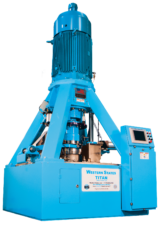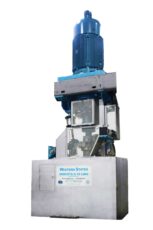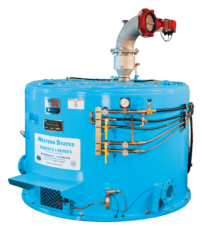SUGAR CENTRIFUGALS
Introduction to Sugar Centrifugals
The Sugar Division has been supplying the beet and cane sugar mills and refineries around the world with the highest performing and most reliable batch and continuous centrifuges for over 95 years. Western States is known globally for its superior reputation in handling all types of massecuite and delivering robust solutions – in fact, many of our sugar processing centrifuges have been in operation for more than 50 years at sugar factories and other processing facilities.
Brief Overview of Sugar Centrifuges
Sugar centrifugals are essential equipment used in sugar production processes to separate sugar crystals from molasses, thereby refining and purifying raw sugar into high-quality refined sugar products. These centrifuges operate on the principle of centrifugal force, exerted by high-speed rotation, which drives the separation process. Sugar centrifuges come in two primary types: batch centrifugals and continuous centrifugals, each offering unique advantages and applications depending on the specific requirements of the sugar processing operation.
Importance of Sugar Centrifugals in Sugar Production
Sugar centrifugals play a pivotal role in sugar production by facilitating the crucial step of separating sugar crystals from molasses after the crystallization process. This separation process is vital for achieving the desired purity, color, and granulation of the final sugar product. By effectively removing impurities and excess moisture, centrifugals ensure the production of high-quality refined sugar products that meet industry standards and consumer expectations.
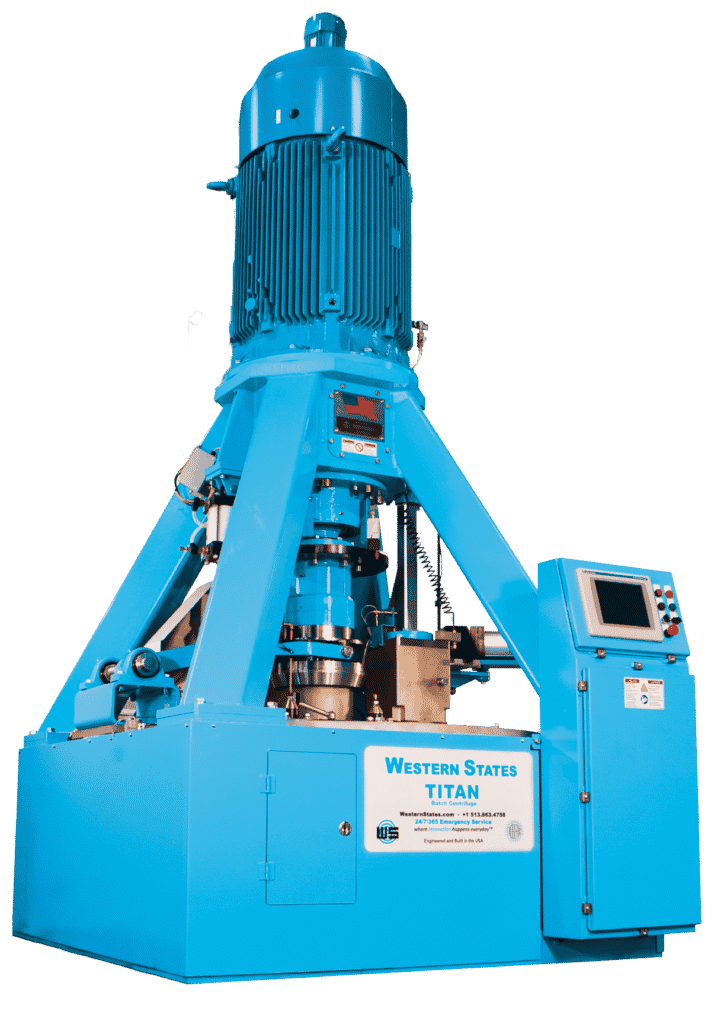
Types of Sugar Centrifugals
Western States manufactures both batch and continuous centrifuges for processing all grades of sugar and sugar cane. Western States centrifuges are used in both the beet and cane sugar industries, as well as other non-sucrose applications such as the manufacturing of the sweeteners dextrose and fructose.
Batch Centrifugals
Batch centrifugals are a type of centrifuge used in various industries, including sugar production, for separating solids from liquids or for classifying particles based on density. In the context of sugar production, batch centrifugals are specifically designed for the separation of sugar crystals from mother liquor (molasses) after crystallization.
Continuous Centrifugals
Continuous centrifuges are a type of centrifuge used in various industries, including sugar production, for separating solids from liquids or for classifying particles based on density. Continuous centrifuges are an integral part of modern sugar production, offering high efficiency, throughput, and continuous operation, which are essential for meeting the demands of large-scale industrial processing. Their automation features and consistent performance make them a preferred choice for many sugar refineries and processing plants worldwide.
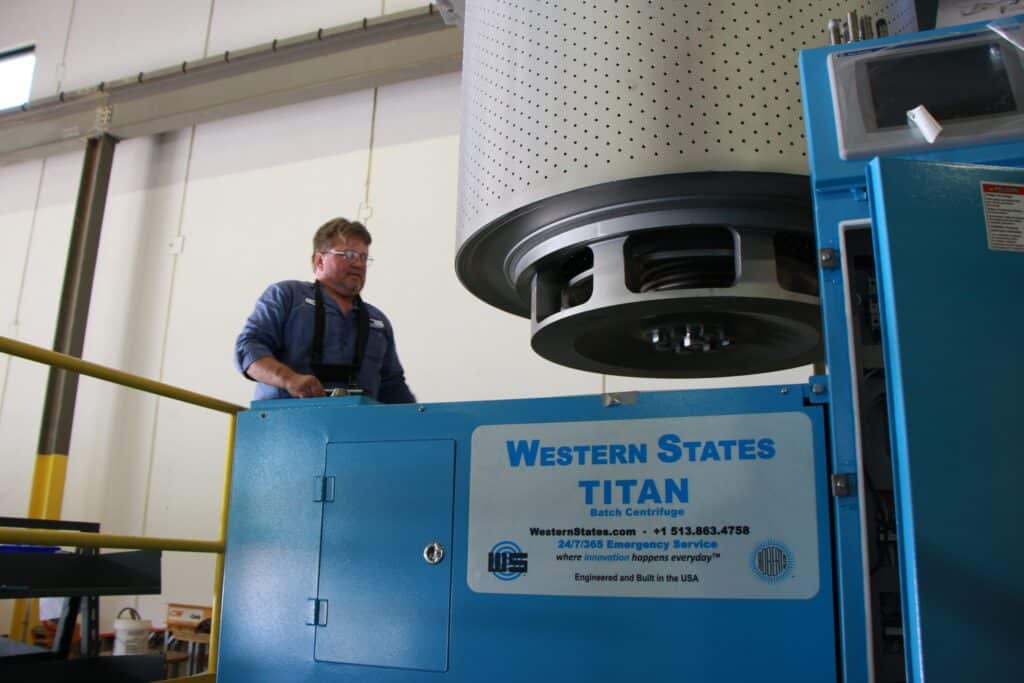
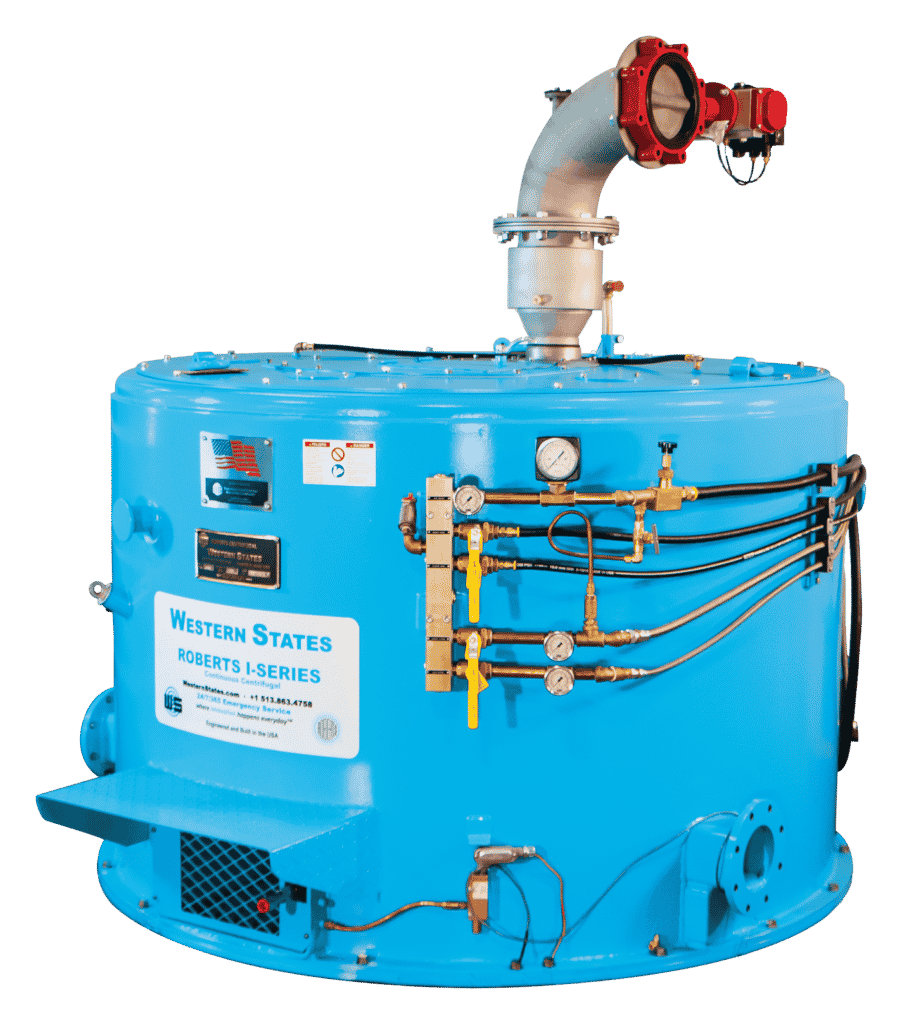
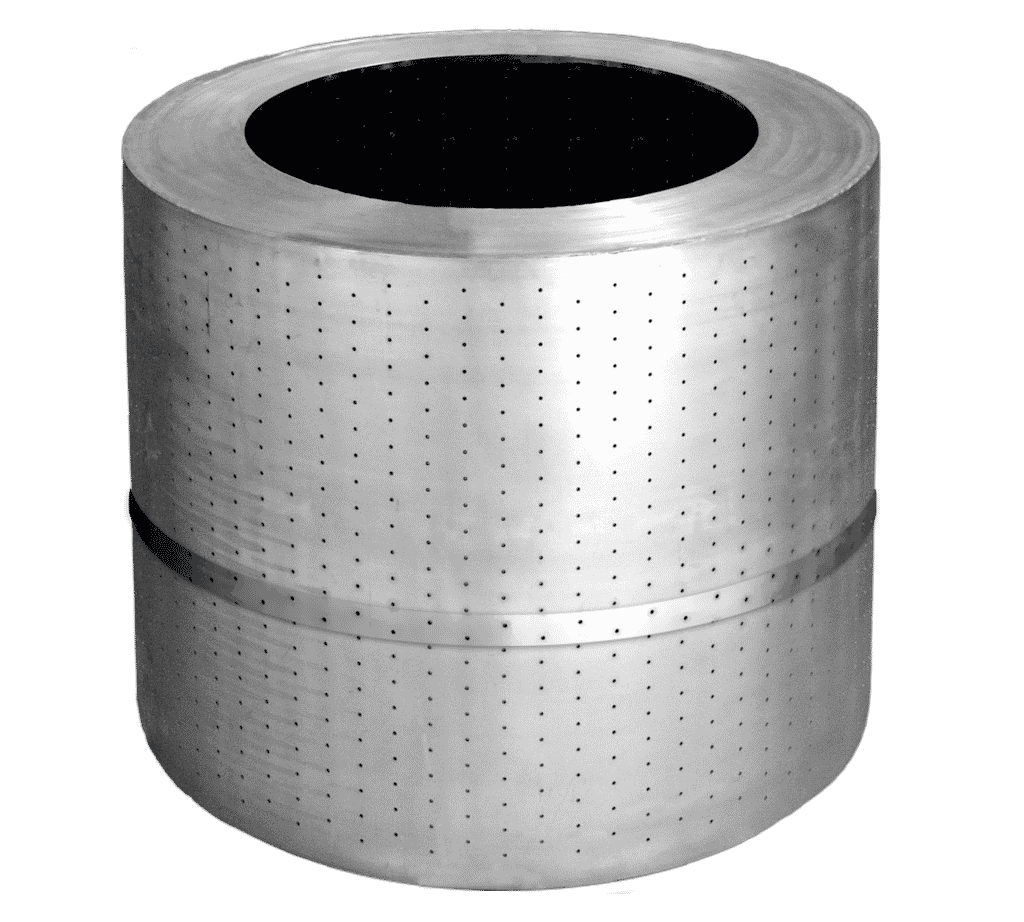
Factors Influencing Sugar Centrifugal Performance
Centrifugal performance is influenced by various factors, each playing a crucial role in determining the efficiency and effectiveness of the separation process. Understanding and optimizing these factors are essential for achieving desired results in centrifugal operations.
Quality of Sugar Feedstock
The quality of sugar feedstock directly impacts centrifugal performance. The characteristics of the feedstock, such as particle size distribution, moisture content, and impurities, significantly affect the separation efficiency. Contaminants in the feedstock can lead to increased fouling, reduced throughput, and lower sugar recovery rates. Therefore, ensuring the quality of sugar feedstock through proper cleaning, screening, and quality control measures is essential for optimal centrifugal performance.
Centrifuge Speed and Settings
Centrifuge speed and settings play a critical role in determining the separation efficiency and throughput of centrifugal processes. The rotational speed of the centrifuge drum, along with factors such as the duration of the separation cycle and the angle of the conical section, influence the force exerted on the particles and the degree of separation achieved. Proper adjustment of these parameters based on the specific characteristics of the feedstock is essential for maximizing sugar recovery while minimizing energy consumption and equipment wear.
Maintenance and Calibration
Centrifuge speed and settings play a critical role in determining the separation efficiency and throughput of centrifugal processes. The rotational speed of the centrifuge drum, along with factors such as the duration of the separation cycle and the angle of the conical section, influence the force exerted on the particles and the degree of separation achieved. Proper adjustment of these parameters based on the specific characteristics of the feedstock is essential for maximizing sugar recovery while minimizing energy consumption and equipment wear.
Environmental Conditions
Environmental factors, such as temperature, humidity, and air quality, can impact centrifugal performance. Changes in ambient conditions can affect the viscosity and flow properties of the process fluid, as well as the efficiency of cooling systems and the stability of equipment operation. Therefore, maintaining stable environmental conditions within the centrifuge facility, through proper insulation, ventilation, and climate control measures, is crucial for consistent and reliable performance.
Benefits of Using Sugar Centrifugals
Sugar centrifugals play a pivotal role in sugar production processes, offering a myriad of benefits that significantly enhance efficiency, quality of final products, and overall productivity.
High Efficiency in Sugar Separation
Sugar centrifugals are engineered to efficiently separate sugar crystals from molasses and sugarcane juices, ensuring maximum yield with minimal wastage. By harnessing centrifugal force, these machines achieve rapid and precise separation, allowing for continuous processing of sugar slurry without compromising on quality.
Reduction in Sugar Losses
One of the primary advantages of employing sugar centrifugals is the notable reduction in sugar losses during the separation process. By effectively isolating sugar crystals from the molasses solution, centrifuges minimize the loss of valuable sugar content through evaporation, which can occur in the separation of non-centrifugal cane sugars. This helps increase operational yield and reducing sugars lost in the manufacturing process.
Improved Quality of Sugar Crystals
The use of sugar centrifugals leads to the production of sugar crystals with enhanced purity and uniformity. By swiftly separating impurities and unwanted particles from the sugar slurry, centrifugals contribute to the production of high-quality sugar crystals that meet stringent industry standards. This improved quality translates to superior taste, texture, and appearance of the final sugar product.
Cost Savings in Sugar Production
In addition to improving efficiency and quality, sugar centrifugals also offer significant cost savings in sugar production operations. By streamlining the separation process and minimizing losses, these machines help reduce raw material wastage and energy consumption. Moreover, their robust design and reliability contribute to lower maintenance costs and extended equipment lifespan, further enhancing the overall cost-effectiveness of sugar production processes.
Applications and Industries
Sugar centrifugals find widespread applications across various industries, primarily in sectors involved in sugar refinement and food processing. Their versatility and efficiency make them indispensable in these fields, contributing to enhanced productivity and quality assurance.
Sugar Refineries
Sugar refineries represent the cornerstone of the sugar industry, where unprocessed materials undergo extensive processing to yield refined sugar products of exceptional quality. In sugar refineries, centrifugals play a central role in the final stages of sugar production, facilitating the separation of sugar crystals from molasses. This crucial step ensures refined sugar production with the desired purity, color, and granulation, meeting the stringent standards set by regulatory authorities and consumer preferences. Sugar centrifugals enable sugar refineries to achieve high throughput rates, consistent product quality, and operational efficiency, thereby driving profitability and competitiveness in the global sugar market.
Food Processing Industry
Beyond sugar refineries, centrifugals also find applications in various segments of the food processing industry, where they contribute to the production of a diverse range of food products. In food processing facilities, centrifuges are employed for solid-liquid separation, clarifying liquids, and extraction. The versatility and efficiency of centrifugals make them indispensable equipment in food processing operations, enabling manufacturers to achieve optimal product quality, yield, and compliance with food safety regulations.
Choosing the Right Sugar Centrifugal
The ROBERTS and TITAN lines of batch and continuous centrifuges continue the Western States tradition of robust design and efficient operation. Our lines of high-speed centrifuges combine modern manufacturing techniques with new alloys, advanced variable frequency drive system technology, state-of-the-art PLC controls, and touch-screen operator interfaces to make both lines of Western States centrifuges offer the most efficient and cost-effective products available today. Western States Centrifuges are fully compatible with your currently installed distributed control systems for the optimum control of your sugar production.
Considerations for Selecting the Appropriate Centrifuge
Choosing the right centrifuge for your specific application is crucial to ensure optimal performance, efficiency, and cost-effectiveness. Several key considerations should be taken into account when selecting the appropriate centrifuge:
- Processing Requirements: Evaluate the processing capacity and throughput required for your application. Consider factors such as batch size, production volume, and desired processing speed to determine the optimal centrifuge size and configuration.
- Separation Efficiency: Assess the centrifuge’s ability to achieve the desired level of separation efficiency for your application. Consider factors such as centrifugal force, rotational speed, and separation mechanisms to ensure effective separation of solids from liquids or classification of particles based on density.
- Product Quality: Prioritize centrifuges that can maintain or enhance the quality of your end product. Consider features such as gentle handling, minimal shear forces, and customizable settings to preserve product integrity and characteristics.
- Maintenance Requirements: Evaluate the maintenance requirements of the centrifuge, including cleaning, lubrication, and component replacement. Choose centrifuges with user-friendly designs, easy access to components, and robust construction to minimize downtime and maintenance costs.
- Compatibility: Ensure compatibility with your existing process equipment and infrastructure. Consider factors such as footprint, power requirements, and integration capabilities to seamlessly incorporate the centrifuge into your production line.
- Regulatory Compliance: Verify that the centrifuge meets relevant regulatory standards and certifications for your industry and application. Consider factors such as sanitation requirements, material compatibility, and safety features to ensure compliance with industry regulations and guidelines.
- Cost Considerations: Evaluate the total cost of ownership, including initial purchase price, installation costs, operating expenses, and long-term maintenance expenses. Consider factors such as energy efficiency, durability, and potential cost savings in production efficiency when assessing the overall cost-effectiveness of the centrifuge.
Customization and Integration with Existing Systems
At Western States, we integrate innovation into every aspect of our manufacturing and business operations. Our design team provides continuous improvement to our centrifuges in terms of performance, reliability, and cost reduction. Since the first ROBERTS™ centrifuges were produced more than half a century ago, we have more than 6,000 centrifuges installed worldwide supporting the sugar industry.
Since Mr. Roberts invented the first centrifugal, Western States innately understood the sugar industry and its need for fast, efficient parts and service support during the campaign. A 24-HOUR x 7-DAY x 365-DAYS PER YEAR EMERGENCY HOTLINE ensures Western States customers quick access to parts and service personnel.
Customization and Integration with Existing Systems
At Western States, we integrate innovation into every aspect of our manufacturing and business operations. Our design team provides continuous improvement to our centrifuges in terms of performance, reliability, and cost reduction. Since the first ROBERTS™ centrifuges were produced more than half a century ago, we have more than 6,000 centrifuges installed worldwide supporting the sugar industry.
Sugar Centrifuges Available For Purchase
• BATCH CENTRIFUGES
• CONTINUOUS CENTRIFUGES
• ROBERTS G-16 LINC BATCH CENTRIFUGAL
Since Mr. Roberts invented the first centrifugal, Western States innately understood the sugar industry and its need for fast, efficient parts and service support during the campaign. A 24-HOUR x 7-DAY x 365-DAYS PER YEAR EMERGENCY HOTLINE ensures Western States customers quick access to parts and service personnel.
Sugar Centrifuge Models Available
Below are some of our machines. Click the button below the image to learn more details on the model listed.
